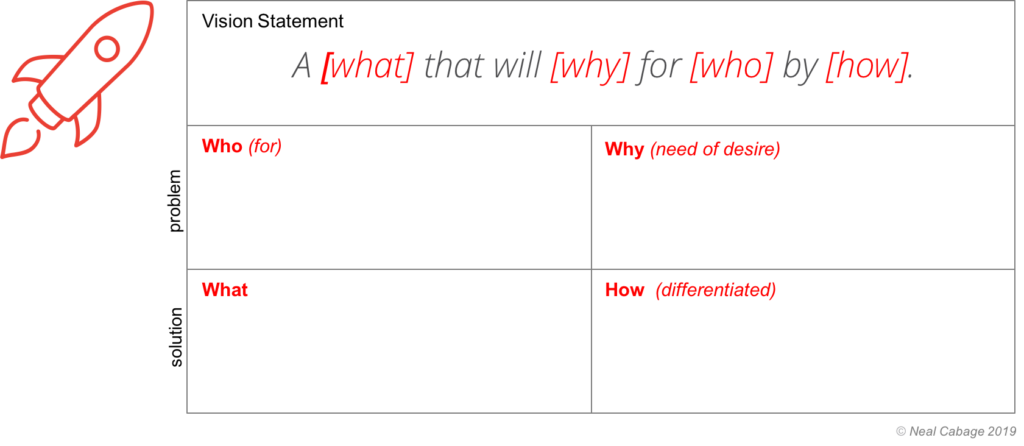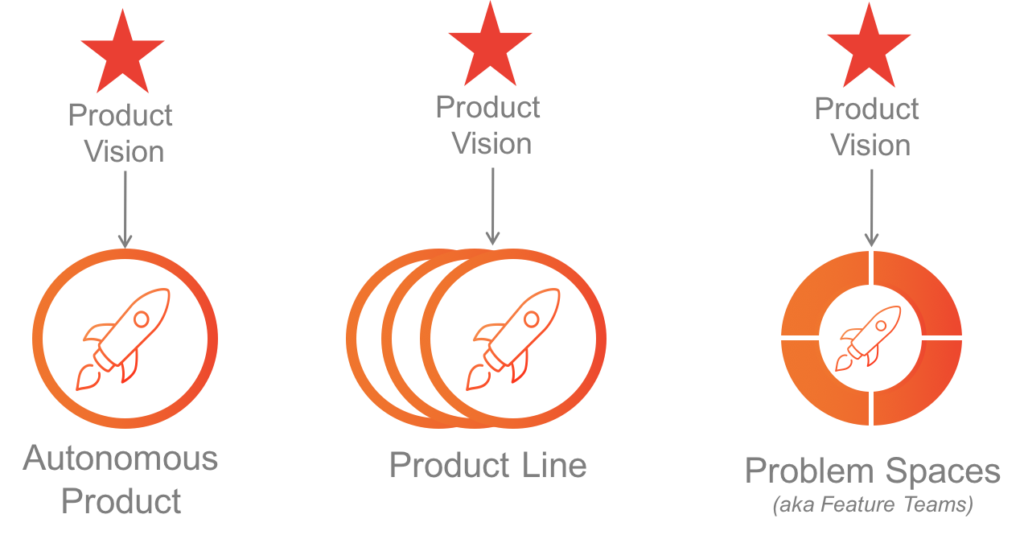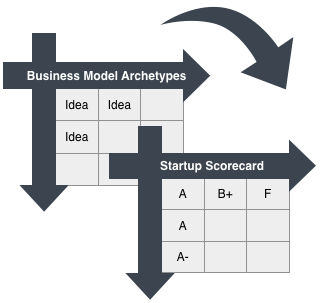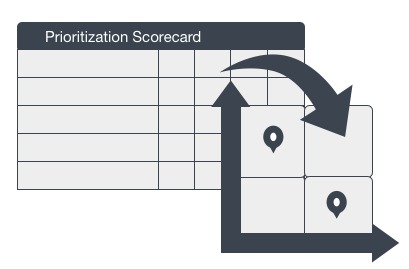Creating a Product Vision
Similar to developing a product roadmap, the Product Vision is deceptively easy to understand. In its ideal form, it is a one-sentence statement about what your product is going to be in its future state, typically with a 3-5 year horizon, that everyone is working toward.
Implicit in that, however, is a lot of research into customer needs or desires, and alignment work with business, to ensure the Product is satisfying the goals of the business that underpin its funding. Like a skilled athlete though, a well-crafted vision statement hides all of that behind-the-scenes work and simply makes it look effortless.
Product Vision Template
“Writing is thinking. To write well is to think clearly. That’s why it is so hard”. – Dave McCullough
To make this easier, I’ve developed a template that can be used in most situations for developing a concise but well-structured vision statement. I assume you’ve already done all your research and alignment pre-work though – this is just about developing the vision statement.
The genius of a one-sentence product vision statement is that it forces you to be precise in every word you use to construct the vision – you must hit the key points as concisely as possible, which means considering the precise meaning of every word matters in this context.
I created a simple template to aid in this process. First, you just need to answer the key questions for context: what, why, who, how – and then sew it together in the format defined here:

It is best to proceed in this order, to really frame the problem before describing the solution:
- Who – The customer segment(s) you’re developing this solution for. Who are they?
- Why – What is their generalized need or desire that you are solving for?
- What – What is the nature of the solution you have developed to address the customers’ need or desire?
- How – How does your solution address the need or desire in a compelling and differentiated way that creates new (perceived) value?
To demonstrate, here is a vision statement I created, assuming I was planning to leverage the latest AI tech, to develop an automated lead nurturing solution for real estate agents:

When do you need a Product Vision?
Every product should have a product strategy, and every product strategy must have 3 key ingredients: a Product Vision, a set of Objectives for prioritization, and roadmap to indicate how you plan to leverage your resources to work toward the product vision.
Each Product Manager doesn’t necessarily need to define any of these things however – it really comes down to the team structure, and whether there is an autonomous or shared strategy for each. I generally see three different structures in this regard:

- Autonomous Product -The autonomous product is a standalone product with its own strategy. If there is one Product Manager for this product then the Product Manager would generally own the strategy for the product.
- Product Line – There can also be a scenario where many “child” products all share one parent strategy, because they’re related enough that they need to move in lock-step, like a family of products. For example, the various models of a device or automobile. In this case, it would be the Product Line Manager who sets the over-arching product strategy, that the individual products plug in to.
- Problem Spaces – Increasingly common in the software industry, very complex solutions may have many Product Managers working on it, in which case they own a mere slice of the overall solution the customer is purchasing. These slices are sometimes referred to as “problem spaces” and the Product teams that support them are called “feature teams” since they’re working on a specific sub-set problem, addressed by a subset of features. In the case of a highly scaled Product Team such as this, you like have a Product executive at the top of that pyramid who is leading the definition of a product strategy with the team or the team ‘deputies’.
Conclusion
The Product Vision is one of the 3 key elements of a Product Strategy, and arguably the most important one, because it casts the direction and purpose of the product, influencing everything that comes after it. Thus it is important to get it right – to write a compelling Product Vision that concisely and compellingly states the purpose and direction that the product will take over the next 3-5 years.



